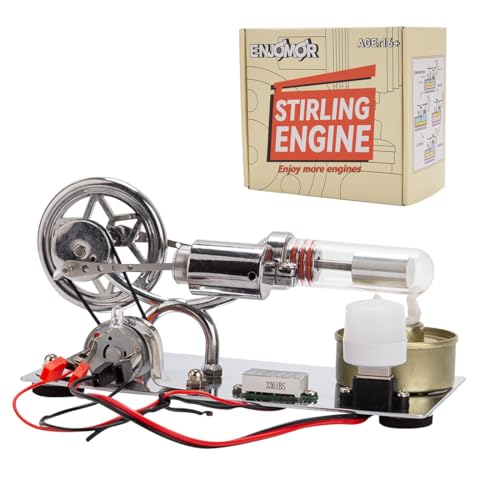Thanks guys. Its getting exciting. Cant wait to see this baby on the rails.
For Dean: I ordered some watch bearings from the company you recommended. I got some L01 and L56 (I think, the 2d and 3rd smallest bores). They will be the gas jets for the burner. Most likely a bar burner used widely in Gauge 1.
Its time to get started on the plumbing. Engine plumbing consists of the safety valve, throttle valve, site glass, pressure gauge, pressure gauge syphon, lubricator, steam dry pipe and exhaust. Plumbing is a lot of work. Fortunately, many plumbing parts are commercially available, which cuts down on the work. For this engine, we are going to scratch build all of it. At first, I thought about skipping the pressure gauge, but now I am thinking about adding one. There is an extra bush on top of the boiler we could use. Well think about it.
For now, lets get started with the lubricator. Steam engines, like gasoline engines need oil in the cylinder. Oil is injected in the steam flow and carried onto the cylinder. There are 2 ways to get oil into the steam flow. One is by a slow acting mechanical pump. The other way is with a hydrostatic lubricator. A hydrostatic lubricator is nothing more then an oil tank with the steam pipe going thru the tank. On the top of the steam line is a very small hole. Here is a schematic.

Steam escapes into the oil tank thru the small hole. It condenses back to water and drops into the tank. Water is heavier then oil so it settles to the bottom, and raises the level of the oil. Eventually the oil level raises to the small hole in the steam line. The oil seeps into the steam line, gets atomized by the steam and is carried off to the cylinder. Real steam oil is extremely heavy gear oil, usually 460 weight. The addition of tallow fat helps the oil atomize. Hydrostatic lubricators are absolutely bullet proof. They work every time.
The combination gear and chain drive transmission used on Nina requires that the steam inlet be on the front side of the engine and exhaust on the back. The steam and exhaust pipes cross each other. I did not think about that mess. It made a difficult placement of the lubricator. Normally the lubricator goes inside the cab, sort of out of sight. Our lubricator is going directly on top of the horizontal boiler barrel. It will be different.
Heres the finished lubricator, ready to go on its stand. There is no drawing for the lubricator. As my old college professors always said, it is left to the student as an exercise
The large plug is the fill/clean out. The small plug is directly over the small hole in the top of the steam pipe. In the unlikely event the small hole plugs, we need to get to it to clean it out.
Start on the lubricator by turning the tank from a piece of 1 square brass stock. Bore a flat bottom hole 11/16 deep and as wide as possible without poking thru the sidewalls.
A flat bottom hole can be hard to do with a regular boring bar. Instead use a regular end mill bit instead of a boring bar. The end mill does just fine.
Cut off the tank from the bar stock and face the bottom smooth. Next, tap 0 x 80 holes in each corner on the top and the bottom of the tanks. The tapped holes on the top are for the lid and the holes on the bottom are for mounting on the stand.
You have seen the picture of the tap handle several times. I cant emphasis enough how important a good tap handle is in the shop. You cant tap a 0 x 80 hole by hand, no way.
Now make the steam pipe. Cut and face a 1 1/2" length of 1/4" brass rod. Drill clear thru with a #30 drill. Run a die over both ends for a length of about 3/16. Drill a 1/4" hole in the tank 7/16 from one edge and 3/16 down from the top. We want the steam pipe slightly off set so it clears the fill plug. Silver solder the pipe into the tank.
The top lid is from 1/16 brass plate. Cut a 1 1/8 square piece so it overhangs the tank just a bit. Using a block of hardwood with some #8 sheet metal screws to secure the top lid, drill #51 holes in the corners to match the 0 x 80 holes in the tank. Drill a 3/16 and 5/16 hole for the plug bushings.
It is really handy to have an X-Y table on the drill press or a milling machine. The graduated table knocks these parts out super accurate and so quickly.
Using the top lid as a guide, drill a #60 hole in the steam pipe, top side only.
Turn bushings out of brass for the plugs. The fill plug is 1/4" x 40, just like the boiler bushings. The clean out plug is 4 x 40 or 6 x 32, whatever is handy.
Secure the top lid to the tanks with 0 x 80 screws in the corners. Silver solder the lid to the tank.
Finally, silver solder the bushings into the top lid. Make some plugs with washers and the lubricator is done.
Next time we will get on the lubricator stand and get everything mounted. I dont know when the next update will happen. I have to report for jury duty on Monday. Federal District Court, must be a biggy. It may last 4 to 6 weeks, they said.
















































![DreamPlan Home Design and Landscaping Software Free for Windows [PC Download]](https://m.media-amazon.com/images/I/51kvZH2dVLL._SL500_.jpg)



























































